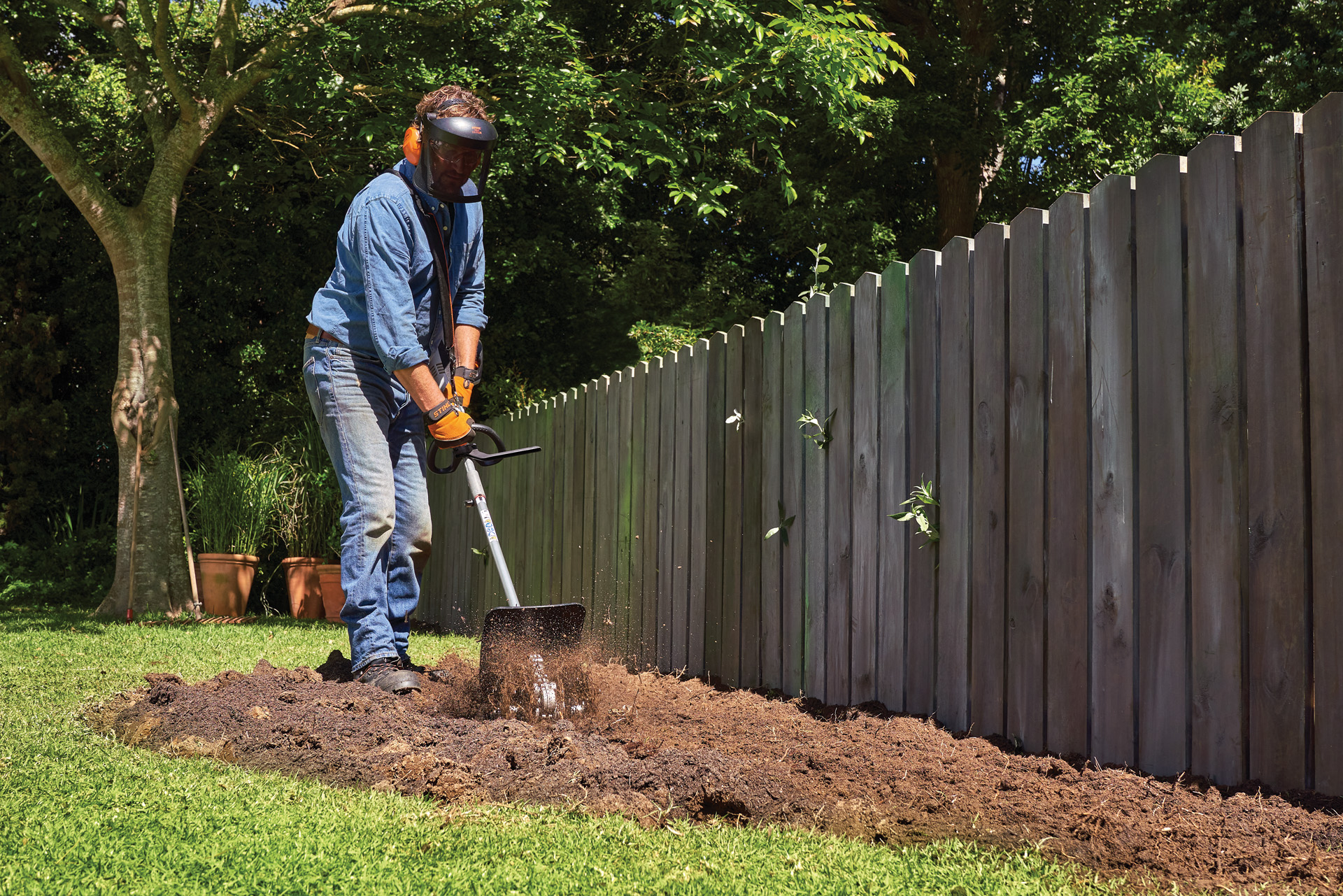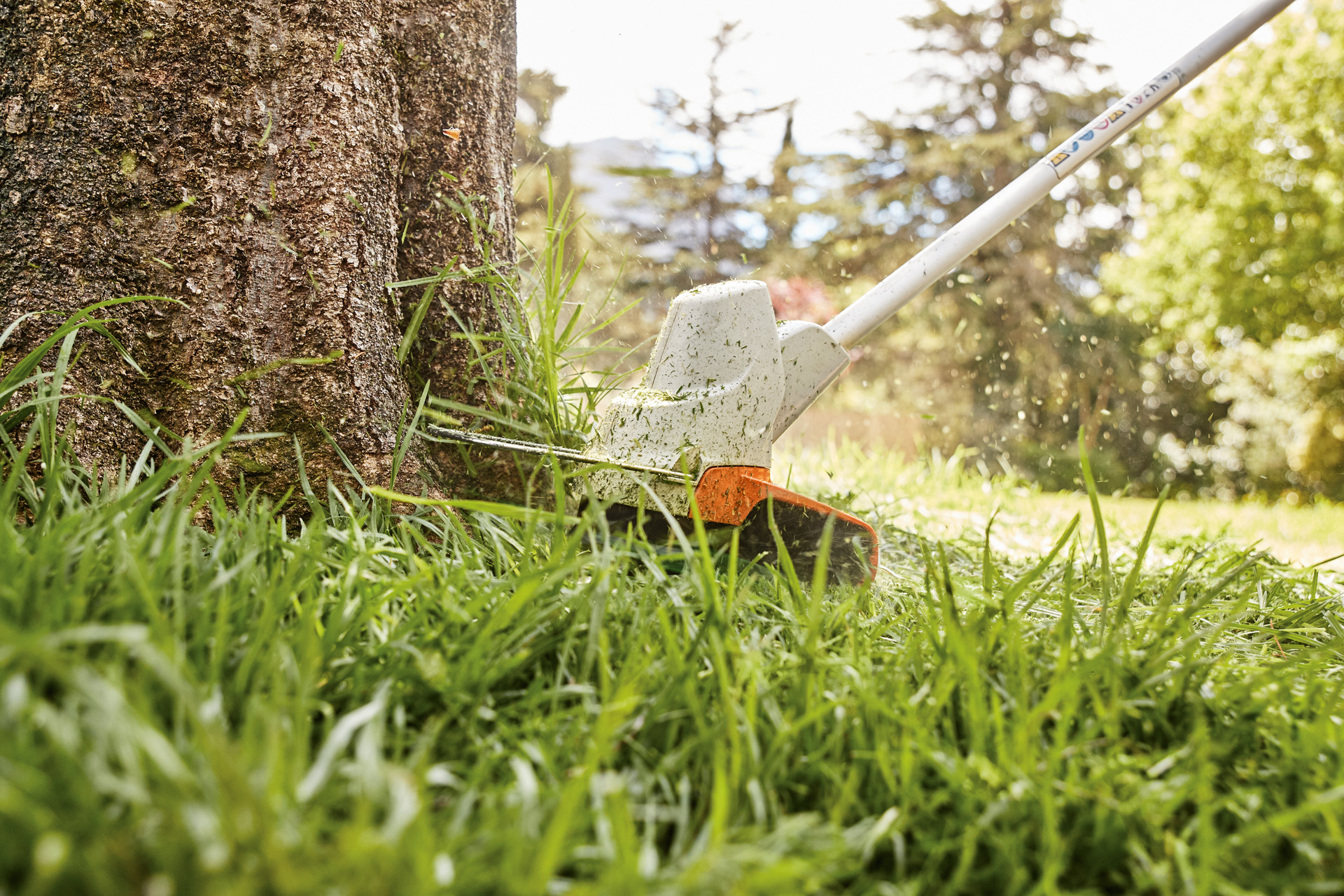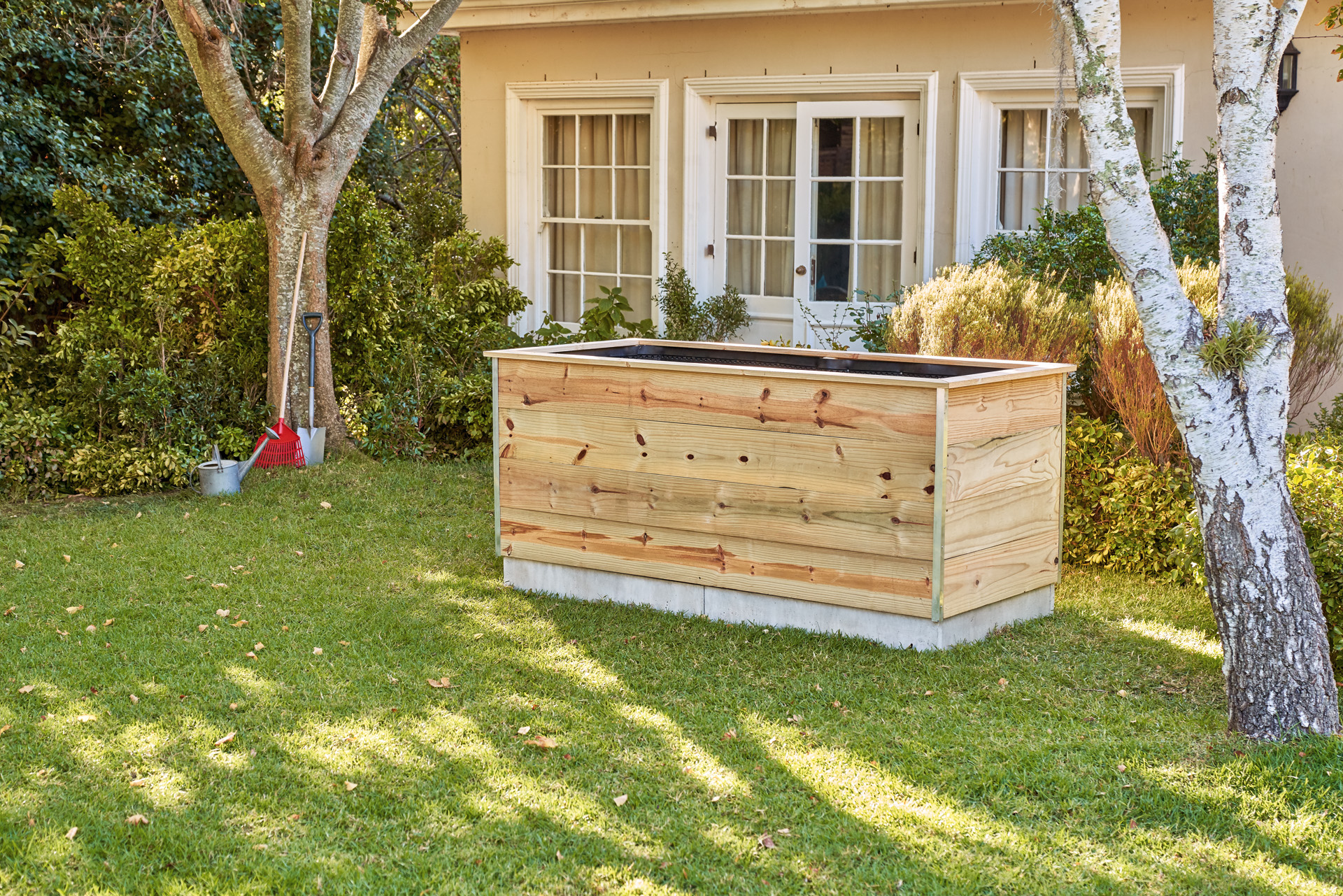Garden guide: planning and planting a perennial display
There’s a huge variety of perennial plants available, so you can easily design a garden area that will bring you joy year after year.
13.07.2023

Planting perennials: allow your creativity full rein
Planting a perennial display opens up wonderful opportunities in terms of design. Perennial plants grow and last for several years, and with the right planning, you can even put together a scheme that provides colour throughout the seasons by choosing plants that bloom in succession. This guide takes you through creating, planning and planting a dedicated bed for perennials, and it can also be used on a smaller scale or even in pots.
Choose which part of your garden you want to adorn with perennials. Think about how large you would like your perennial display to be, based on the space available and your broader garden design ambitions. You can create your perennial bed next to a wall or border or as an “island” bed in the middle of a lawn.

Identify the growing conditions before deciding on your planting scheme
Think carefully about the site of your perennial flower bed. What is the soil type there, and how much sun does it get? These considerations will heavily influence which perennials you can grow successfully: a sun-loving echinacea will never thrive if it is shaded by buildings and only gets a few hours of sun each day. Give it a bed in full sun, so it can happily soak up many hours of sunshine every day.

Planting perennials: the right time to do it
Spring is a good time to start planting a perennial display, as the risk of frost should have passed, but temperatures are not too high. Grasses, in particular, should be planted during the spring to grow well. There is also the option of planting up your perennials in autumn then thickly mulching them for the winter. Spring-flowering bulb flowers are the exception here: these popular perennials must be planted in autumn, so you will generally only find them in garden centres at that time of year.
If you opt to install your perennial flower display in autumn, it’s really important to cover the earth with mulch after planting. This is because your newly installed plants are particularly vulnerable to frost damage, as they have not yet rooted into place. In very cold weather, freezing of the moisture in the ground can lead to frost heaving, which is when plants are disturbed and even uprooted by the movement of repeatedly frozen and thawing earth. This can cause severe damage to the plants. A generous layer of mulch after planting should prevent the earth from getting too cold, so your perennials are better protected.
Creating and planting a perennial display: step-by-step instructions
A perennial bed in your garden can take many forms and make plenty of impact. You could go for a rock garden, a gorgeous flower island on the lawn or create a bold splash of colour at the side of your house.

Step 1: choose location
Before you decide on the planting in your bed, consider its location. In particular, the light conditions – full sun, partial shade or deep shade – will greatly affect which perennials are most likely to succeed. Be prepared with this information before you start researching planting choices. The quality of your soil is also important: is it sandy or rich in clay?
Full sun or part shade is ideal for a huge range of perennials, but beautiful planting schemes are also possible, even in a shady location.
| Sunny | At least 6 hours of sun per day |
| Partially shaded | 3-6 hours of sun per day |
| Shady | Less than 3 hours of sun per day |
Think about design
Do you want to theme your display or have a specific design concept in mind? There are many ways to approach this and many variables to consider. You could choose a single-coloured scheme or opt for boldness, or you might favour a cottage-garden style. When would you like your perennial display to be at its blooming peak? Do you want to create space between the flowering plants by adding grasses? Give your imagination free rein.

It’s all about soil and sun
Take notice of the soil quality and the amount of sun it will get. Dry, sandy soils won’t suit thirsty plants; slow-draining clay is hard to cultivate and not ideal for drought-tolerant perennials; loamy soil is the gardener’s jackpot, a great all-rounder. Seed packets will include information about the preferences and needs of each plant. Don’t fret if your site doesn’t offer perfect planting conditions: there are perennials to suit every situation.
Practical gloves for working in the garden

Spacing your plants
Perennials generally need to be planted at a certain distance from each other, so they have enough room to grow well – underground as well as on top. As a rule of thumb, the space between one perennial and another should be around one-third of the expected eventual height of the plant. Based on this, a newly planted bed will often look quite bare, but do follow the guidance on spacing – the gaps will soon disappear as your plants grow.
Garden bed design: remember point of view
If you are planning your perennial display against your house or a wall, you can design your planting in tiers, planting taller perennials at the back and smaller ones towards the front. You can apply the same principle to an island bed, though the taller perennials should be planted towards the middle. This arrangement means you can use a wide variety of perennials and showcase them all to best effect.
Add annuals to fill spaces
If there are gaps in your perennial bed, you can plant some annuals to add extra colour for the season. Otherwise, you can mulch bare patches of earth with dry grass cuttings, potting compost or mature leaf mould containing no weeds.

Step 2: prepare ground
Start by removing any weeds and stones from the surface of the area you will be using for your perennial bed. If you have ground elder, pull it carefully out of the ground along with its roots.
Next, loosen the soil to a depth of about 15 centimetres. Add soil conditioner, compost or bonemeal to the earth to improve its quality. If the area is very overgrown and compacted, digging it over properly will help. You could use a tool such as the STIHL KombiSystem with pick tine to do this.
Clay soil, in particular, benefits from this kind of digging over before you start planting, as it allows water to penetrate more easily and ensures that the soil gets sufficient oxygen. You can also add sand and compost to improve drainage in heavy soil. Finally, rake the earth level.
If you’re planting a rock garden with perennials, look for plants that prefer to be dry. These alpine varieties originate from areas with challenging growing conditions, such as mountainous regions. They require excellent drainage, so you should also work some gravel or volcanic pumice into the soil when preparing the ground.

Step 3: get plants in the ground
The earth is prepared, your plan is finalised – now it’s time to get planting! Before you take your chosen plants out of their nursery pots, arrange them on the bed and move them around until you are happy with the look.
Once you’ve got a design you are happy with, you can move on to planting. Start by submerging the pots in a bucket of water until no more bubbles come out of the root balls – this means the plant is soaked and ready to plant. Dig a hole with a garden trowel; it should be as deep as necessary to ensure that the top of the soil from the container is level with the earth in your bed.
Give the ground a good soak after planting your perennials. This will ensure that the plants settle and grow well.
Perennials to plant: suggested varieties and design ideas
These reliable varieties of flowering perennials are popular with gardeners
| Name | Location | Height | Flowering period | Flower colour | Special features |
|---|---|---|---|---|---|
| Yellow coneflower (rudbeckia fulgida) | Sun, nutrient-rich soil. | Up to 70 cm | July to September | Yellow or golden yellow | Clump-forming and spreads by runners. Tall perennial. |
| Hardy geranium | Sun, partial shade or full shade depending on the variety. | 40-90 cm depending on the variety | May to June | Blue, violet, pink, white | Numerous varieties. Red autumn colouring. Densely growing. Can be planted under shrubs, good companions for roses. Avoided by snails. |
| Astilbe | Nutrient-rich soil in partial shade or full shade. | 20-100 cm depending on the variety | June to September | Bright bushy panicles in white, red, pink | If planted in full sun, must be kept moist. Clump-forming. |
| Sneezeweed (helenium hybrids) | Sun, nutrient-rich soil that is not too dry. | 60-150 cm depending on the variety | June to October | Yellow, red and almost all mixed colours | Good source of food for insects. Best to divide plants every 3-4 years in order to rejuvenate and propagate. |
| Lady’s mantle (alchemilla mollis) | Sun, partial shade, full shade. Nutrient-rich, free-draining soil, but also clay. | 40-60 cm | June and July | Greenish yellow | Bee-friendly, suppresses weeds. Cutting back after flowering promotes new growth. Attractive greenery. |
| Purple coneflower and other echinacea varieties | Sun to partial shade. Humus-rich, nutritious soil, moderately dry to moist. | 80-100 cm | July to September | Yellow, orange, red, white and mixed colours. | Source of food for bees, medicinal plant. Fertilise with compost in spring and replenish with nettle fertiliser. |
| Meadow sage (salvia nemorosa) | Full sun, soil must be free-draining. Very undemanding. | 30-50 cm depending on the variety | June to August | Blue, violet, white, pink | Can survive on little to no food, manages to thrive in dry ground. |
| Hosta hybrids | Partial shade and shade. Nutrient-rich soil. | 30-60 cm depending on variety. | June, July | Pale pink/violet | Shade-friendly perennial with ornamental foliage. Susceptible to snail damage. |
| Sedum telephium | Sandy soils with full sun. | 40-70 cm depending on the variety | August to October |
White, pink, red | Prune the outer stalks of the perennial back slightly in May. This will make the plant sturdier and enable it to bloom for longer. |
| Oriental poppy (papaver orientale) | Nutrient-rich soil and full sun. | 70-90 cm | May to June or June to July depending on the variety | Red, orange, white, almost violet | Poppies die back after flowering, so are best combined with late-flowering perennials such as rudbeckia to prevent gaps. |
| Larkspur (delphinium hybrids) | Sun, loamy/sandy, nutrient-rich soil. | 100-180 cm | June and July, September and October | White, blue, dark blue | Cutting back hard after flowering promotes additional blooms. |
Perennials for ground cover – don’t give the weeds a chance
| Name | Location | Height | Flowering period | Flower colour | Special features |
|---|---|---|---|---|---|
| Creeping phlox (phlox stolonifera) | Sun, dry locations. | 5-10 cm | May | Pink, white, purple | Also suitable for dry slopes. |
| Creeping thyme (thymus serpyllum) | Full sun, low-nutrient soil. | 5 cm | June to August | Violet, red | Bee- and insect-friendly. Can also survive extended dry periods. |
| Renard geranium (geranium renardii) | Sun, dry, free-draining soil. | 20-30 cm | June to July | White with violet veins | Produces short runners, very undemanding. Ideal for rock gardens. |
| Barren strawberry (waldsteinia geoides) | Partial shade, full shade. | 20-25 cm | April to June | Yellow | Bee-friendly. Related waldsteinia ternata can grow in places where nothing else seems to grow. |
| New Zealand burr (acaena buchananii) | Sun. Dry soil. | 5 cm | June and July |
Yellow, red | Evergreen, resistant to snails. |
| Foamflower (tiarella cordifolia) | Partial shade, full shade. Nutrient-rich soil. | 20 cm | April to May | Creamy white |
Evergreen. |
| European wild ginger (asarum europaeum) | Partial shade, full shade. | 10 cm | April to June | Brown, inconspicuous |
Beautiful, glossy leaves, evergreen. |
| Barrenwort (epimedium x rubrum and other varieties) | Partial shade or full shade. Also suitable for dry locations. | 20-35 cm | April to May | Yellow, white, pink, red | Autumn leaves simply disappear into the thick cover. |
| Coral bells (heuchera hybrids) | Sun to shade depending on the variety and type. Nutrient-rich soil that contains plenty of humus. | 20-40 cm, depending on variety | June to July |
White, pink, red |
Perennials with ornamental leaves; the moister the ground, the more sunshine heuchera can withstand. |
Perennial bed concept: drought-resistant tiered bed
The following perennials are suitable for planting in a drought-resistant bed measuring 2.5 x 2 metres, and can be distributed as you prefer. The taller plants should be planted at the back and the smaller ones towards the front.
6x meadow sage (salvia nemorosa)‚ ‘Blue Hill’: 20-50 cm tall
9x Gaillardia ‘Burgundy’: 60-70 cm tall
4x silver feather grass (stipa barbata): 50-80 cm tall
3x Rudbeckia hirta ‘Prairie Sun’: 80-100 cm tall
2x Russian sage (salvia), ‘Blue Spire’: 100-120 cm
2x Round-headed leek (allium sphaerocephalon): 90 cm tall

Tips for planting and maintaining a perennial bed
Perennial types and planting density
| Plant height in cm | Perennials per m2 | |
|---|---|---|
| Flowering perennials | 60-100 | 2 |
| Companion perennials | 40-60 | 5 |
| Filler perennials | 20-40 | 7-9 |
| Groundcover plants | max. 10 |
up to 15 |
How often should you water perennials?
We recommend watering your plants less frequently but more generously. Once or twice a week is usually enough, depending on the weather and the type of perennials you have planted. During periods of dry weather, you should water your plants more often; otherwise, their roots cannot grow deep enough, and the perennials will be less robust. Alpine and prairie perennials require less water than flowering perennials.
How many perennials can I plant in one bed?
Planting several of the same type of plant together looks good. We recommend that you do not plant more than 6-7 types of perennial in a bed. If you have more space, simply plant more of each type. When you break this down into square metres, it depends on the size of the perennials: the taller the plant, the fewer you should plant per square metre.
You can read more about this in the table above ↑.
Adding a border to your bed

Separating the flower bed from the lawn is visually pleasing and looks tidy. If you have an island bed, in particular, we suggest a clear border: bricks or large stones are a good choice.
If your perennial display is next to a hedge, the woody roots of your hedging could spread into the bed and choke your perennials. To prevent this, you can insert a 40-centimetre-wide piece of pond liner vertically into the ground between the hedge and the flowers to function as a root barrier.
Perennial bed maintenance
Once your perennials have rooted well and are settled, you will need to fertilise them regularly. The nutrients you add should be geared towards the plants in the bed and the soil conditions. Compost in spring and an organic long-term fertiliser are the best choices for both the plants and the environment.
If you want to harvest cut flowers from your perennials, you can do this at any time. Removing blooms will prevent the perennials from investing too much energy into producing seeds and thereby weakening themselves. Don’t cut everything back too drastically in autumn: some insects like to overwinter in dead stems, and birds will eat leftover seeds. You only need to cut back perennials that have large, soft leaves, as these tend to go pulpy and may rot. Secateurs work very well for cutting the plants.
Summary: planning and planting a perennial display
- A perennial display is a real eye-catcher for the garden. When designing your bed, you can give your creativity free rein.
- Spring is the best time to make a perennial display, as the perennials can be planted straight away.
- Before creating your perennial bed, you should draw up a planting plan that takes considers the location, soil quality and your preferred colours and flowers.
- The bed should be free of weeds and stones. Prepare the ground with compost and bonemeal.
- First, arrange the potted perennials to check your design, then soak the root balls in water and plant them in the ground.
- Perennials are usually rather low-maintenance. It is sufficient to water the bed thoroughly, up to twice a week, and to keep it clear of weeds.




